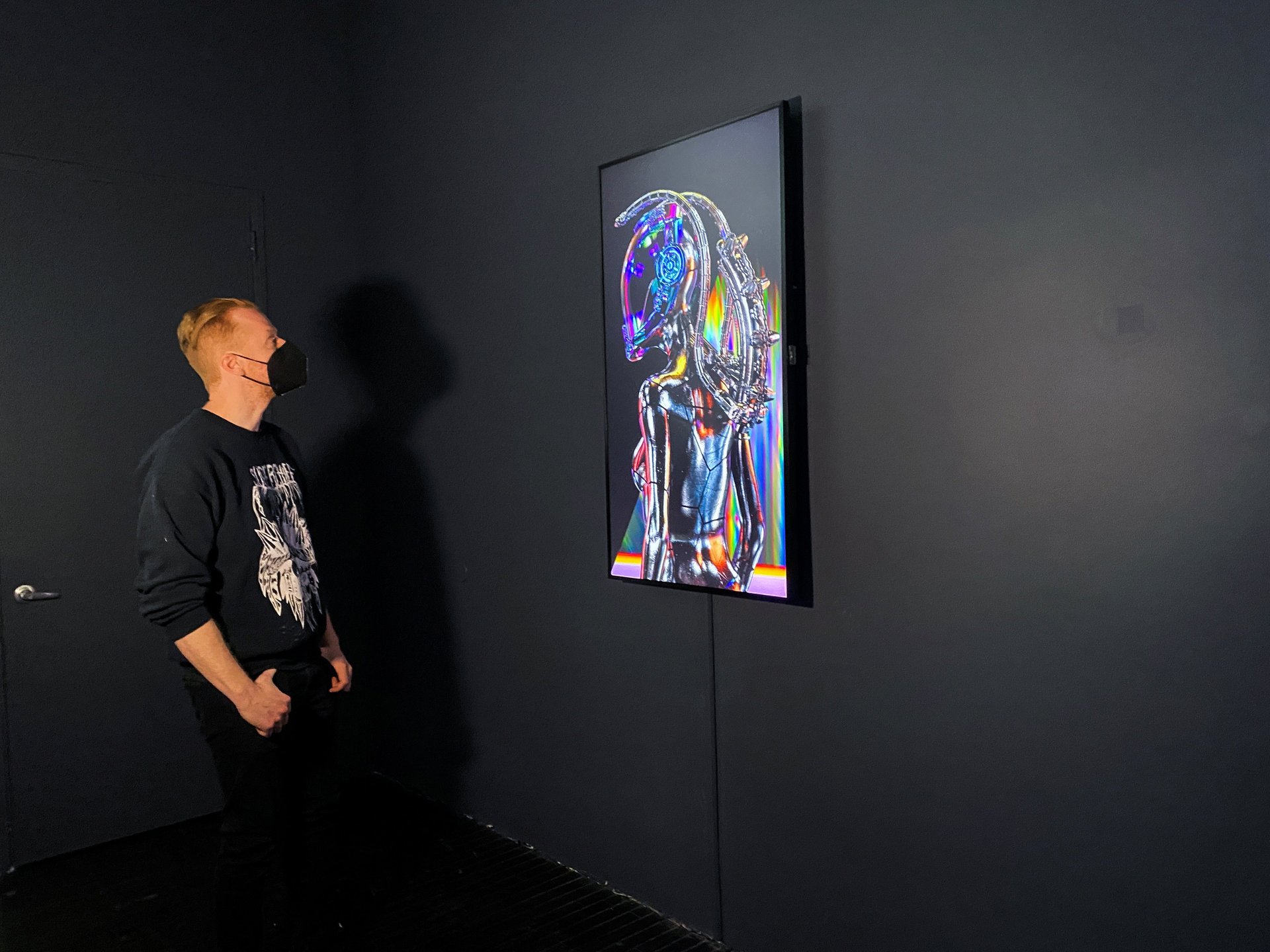The NFT boom has gone bust — for now
The digital artist Beeple shocked the world in March when he sold his collage “Everydays” at Christie’s for $69 million as a nonfungible token (NFT). Suddenly, it seemed that every news organization was writing some explanation of this phenomenon, attempting to answer the question: Why would someone pay the price of an original Monet, a Picasso, a van Gogh for what’s essentially a glorified JPEG?


The digital artist Beeple shocked the world in March when he sold his collage “Everydays” at Christie’s for $69 million as a nonfungible token (NFT). Suddenly, it seemed that every news organization was writing some explanation of this phenomenon, attempting to answer the question: Why would someone pay the price of an original Monet, a Picasso, a van Gogh for what’s essentially a glorified JPEG?
NFTs are used in many different industries—like music, art, and sports collectibles—so there are issues with lumping them all together. But even by the time Beeple made his record-breaking sale, the NFT market as a whole was already on the downswing. Weekly trade volume of NFTs peaked at nearly $200 million in the last week of February, fueled by $125 million worth of activity on NBA Top Shot, the Dapper Labs-owned platform for buying and selling basketball highlight clips minted on a blockchain.
Now NFT activity is down across nearly every trackable metric. Last week, the NFT market saw about $35 million in sales, according to the data tracking firm DappRadar, down significantly from its February peak. During the same period, the number of people using NFT marketplaces fell 80% from a peak of 650,000 people to a more modest 128,000.
“It certainly feels like NFTs were the biggest story in crypto a couple months ago and that is no longer the case,” Daniel Roberts, the editor in chief of the crypto-focused news site Decrypt, told Quartz in an interview. “That’s not to say that NFTs are dead, which is something people would love to say in big screaming headlines, by any means. But there was a real hype cycle that has somewhat dissipated.”
The rise and fall of the NFT
The idea of NFTs, copies of digital media assets placed on a blockchain, was minted years ago, long before the concept took off and became popular among digital artists and crypto enthusiasts.
Anil Dash, the CEO of the software company Glitch, co-created the first proto-NFT at a conference in 2014. But he’s skeptical about the current hype around NFTs. He chalks up much of the recent NFT boom to an “overhang in crypto assets.”
Prices of the cryptocurrencies bitcoin and ether have skyrocketed more than 400% and 1700% respectively since the start of 2020. He feels there’s a disconnect between people who care about the art and people who care about the tech with little crossover. “To me, it’s very, very clear that the rise and attention was [that] not lots and lots of dudes who were obsessed with crypto suddenly started to care about art,” Dash said in an interview. “There is a very vanishingly small overlap that I think actually will persist after the boom passes or the bubble pops, but that part is really hard to see because of the noise around everything else.”
Roberts likened the NFT boom to the explosion of initial coin offerings (ICO) in 2017, a novel cryptocurrency fundraising strategy that produced few successes and alarmed regulators.
“Even though so much of that was junk and the SEC cracked down on a lot of ICOs, some token sales from that time were legitimate and have survived and still exist and had a real business purpose,” Roberts says. “Similarly, I think there will be a separating the wheat from the chaff, a gradual shaking out, where a lot of the NFTs that were just money-grabs amid the hype will just fade away and in hindsight will look silly, but there will be use cases of NFTs that will remain and prove to have staying power and real value.”
What’s next for NFTs?
The purveyors of NFTs acknowledge the boom is over—for now. They largely see it as a natural contraction of a hyped-up industry and are looking toward the future.
Lindsay Howard, head of community for the NFT art market Foundation, said that although the company definitely saw an initial boom around February when it first launched, she is starting to see a “promising” secondary market and works averaging 200% increases from their original sale price.
“We were aware that the markets would change, and we were always confident that collectors were making investments toward the ongoing practices of the artists on our platform,” she said.
Blockparty, another NFT marketplace, always depended on NFTs for blockchain-based ticket sales, but pivoted its business this year to be a more general platform that can support NFT sales on various websites. CEO Vlad Ginzburg said he wants the company to be the Shopify of the NFT market.
Ginzburg stressed he wants the company wants to support NFT sales on various websites, plug into many different blockchains like Ethereum and Flow, and make transactions easy by accepting credit cards and other payment types. That will make the NFT market more inclusive, user-friendly, and cheaper. “The intentionality and the goal is in the name Blockparty,” he said. “It’s a party. It’s inclusive.”
But he’s also wary of the bubble bursting completely, especially when the crypto bull run ends. “If we don’t make this user-friendly… we risk this being a bubble.”
Dash, who co-created the first NFT with artist Kevin McCoy, has since kept his distance from the market. He’s skeptical of the NFT market, which he sees as inflated and full of scammers. But he genuinely hopes it succeeds in a way that supports artists as he originally intended. “My most positive interpretation,” he said, “is that it’s returning back to the people who were sincerely interested in it a couple months ago.”